
The Endless Bus Trip is a visual essay about Korean and Chinese immigrants living in Flushing, Queens, who ride casino buses as a way of life. Twice a day, immigrants wait at unmarked bus stops along the crowded downtown streets to buy $15 bus tickets from New York City to the Sands Casino and Resort in Bethlehem, Pennsylvania. The regulars are known as bus-kkun, a Korean slang word that means “bus riders.” Many of these day-trippers do not gamble. Instead, they make the trip to collect the meal vouchers they receive when they arrive—vouchers that they then sell on the casino’s black market. A half-day trip to the Sands Casino can net around $40, and for many bus-kkun, this is their sole source of income.
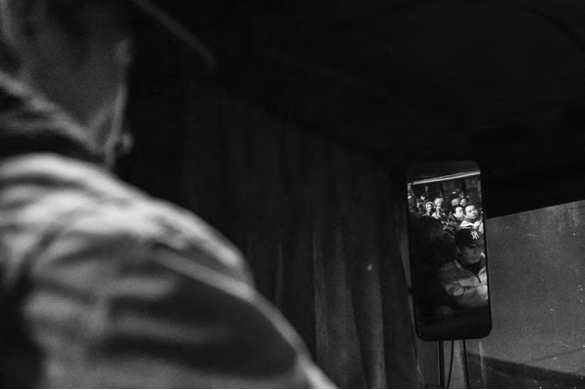
There are several community-run organizations in Queens, such as the Love Mission House, that provide rudimentary accommodations for alcoholics, problem gamblers and many bus-kkun. However, the majority of bus-kkun continue to circulate in an endless cycle of bus rides between city and casino. Over time, some bus-kkun, like Son Jung-Ho, have become addicted to gambling and rely on the acquisition and sale of vouchers in order to restore depleted funds. As a consequence, bus-kkun are often scorned and ostracized. The Korean community in Flushing, widely known for its philanthropic outlook, has ignored this growing band of traveling gamblers and black-market innovators.

According to staff at the office of New York Assemblyman Ron Kim, whose district includes downtown Flushing, more than 50 casino buses depart from Flushing every day, and hundreds of bus-kkun make daily round trips between Queens and Bethlehem. In recent years, gambling operators around the country have grown attuned to the value of establishing a strong base of Asian gamblers, who often come from gambling-friendly cultures. They charter Asian bus companies and send free promotional buses to nearby urban Chinatowns. For example, in San Francisco, every day 80 buses pick up Asian gamblers and transport them to casinos. In Boston’s Chinatown, a daily rate of 50 buses shuttle Asian clients to the Foxwoods and Mohegan Sun casinos in Connecticut. The unwitting gamblers, lacking the resources to resist this magnet, have become easy targets for the casinos, which exploit their vulnerability in order to reap large profits. “This is not a special tour bus,” said Les Bernal, National Director of the organization Stop Predatory Gambling. “Buses are pulling in the poorest members of the society, especially targeting Asian Americans. It’s racial profiling that employs the most predatory practices of any kind of business. It’s common in any state where there’s a Chinatown.”
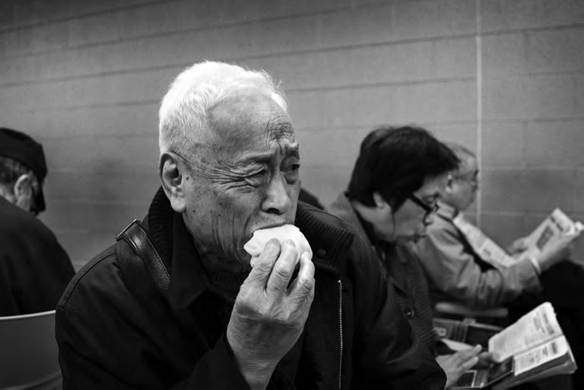
As a result of these intense marketing efforts, Asian customers are increasingly dominating the seats at casinos. In Bethlehem, a city with an Asian population of 2.9 percent, roughly half of the players at the Sands Casino’s 193 tables are believed to be of Asian descent. One-third of the 4,000 customers at Foxwoods Resort Casino and 50 percent of gamblers at the Pechanga Resort and Casino in San Diego County have been estimated to be Asians. A recent survey conducted by Dr. Timothy Fong, director of the Gambling Studies Program at the University of California Los Angeles, shows that while Asians make up less than 14 percent of California’s total population, they account for more than 30 percent of the patrons in the state’s casinos. This group is more likely to develop significant gambling problems in such Asian-friendly environments. One result is the expansion of the bus-kkun community of travelers who endlessly circulate in search of vouchers.
***
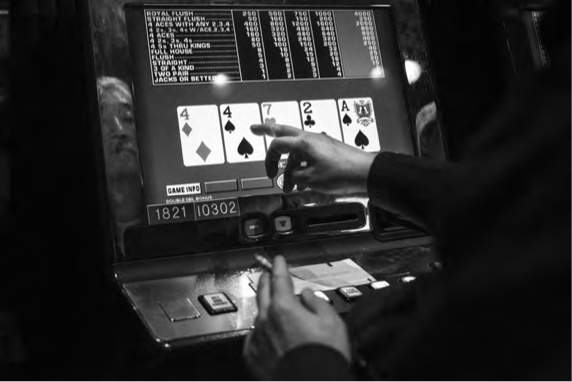
Tours are organized by the Asian Marketing Divisions of casinos located throughout the Northeast corridor. I spoke with many bus-kkun and wrote articles about how their downtrodden lifestyle was affecting this otherwise stable immigrant community in Flushing. However, it was only after meeting Chun Hae-Young, 57, that I began to fully understand the daily struggles embedded in the bus-kkuns’ endless journeys. There is not much data on bus-kkun practices. Consequently, experiencing and observing their way of life is essential to documenting the reality of their substandard living conditions.
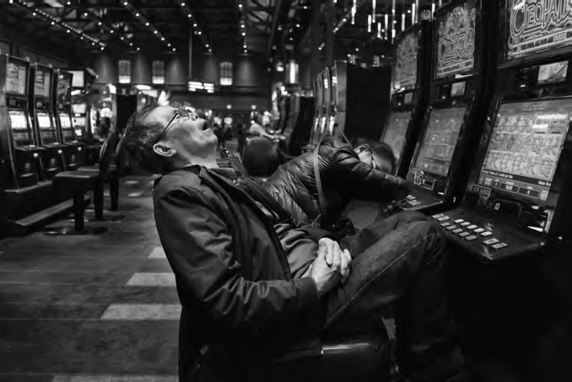
I started this project by meeting wanderers at different bus stops. Talking to people who made the journey between city and casino brought me into this society of travelers. Eventually, in early 2013, I made the bus trip myself. Always wearing the same old clothes in order to blend in with fellow day-trippers, I took the overnight, round-trip bus to the casino. I made the trip on the same day, every week for more than six months. Like my fellow bus-kkun, I received a credit voucher from a casino staffer as soon as I arrived at the casino. During my first trip, an old Chinese woman approached me quietly at the casino entrance, where I carefully exchanged the voucher I had received only seconds before. Within a matter of minutes, I had earned $45. Engaging in this kind of exchange quickly transformed me into one of the regulars. During the five hours I spent at the casino waiting for the bus back home, I positioned myself among the bus-kkun as an attentive listener. Everyone had a unique story to tell.

Chun Hae-Young is ethnically Korean but arrived in the United States 14 years ago from Shenyang, China. He has been gambling in out-of-state casinos for many years. When he gets cleaned out, he sells his vouchers to replenish his cash flow. Mr. Chun describes the Sands Casino as a resource for those who are physically unable to work due to poor health or old age. “The casino is a kind of place that can bleed you dry,” he comments. But, “It can also save your life when you have nothing.” Despite Mr. Chun’s precarious situation as an undocumented immigrant, he used to send US dollars to his family in China before becoming unemployed. “I can’t go back to China without achieving my (American) dream. One day I’ll beat the odds. But I know this journey won’t end until I die.”

In Flushing, the Love Mission House is one of the temporary shelters where bus-kkun often spend their days off. Moses Chon, a reformed compulsive gambler who has lived around the Atlantic City casinos for nearly 20 years, offers his two-bedroom, half-basement apartment as a temporary shelter for his companions who have had to turn to sleeping on the streets. Many of the people Chon takes care of have been hospitalized for diabetes, tuberculosis and other debilitating conditions. Last year a resident named Hyun-Kwang Lee, 64, who used to be a bus-kkun before developing severe diabetes, was hospitalized. Lee had no family to take care of him and ended up passing away, leaving bills that were sent to the Love Mission House. Despite Chon’s dedicated support of these marginalized Koreans, they routinely suffer from financial problems and the lack of kin-based support groups. The daily lives of many members of the bus-kkun community remain invisible, especially those who identify as senior citizens or as compulsive gamblers. While it is known that for many years casino operators have targeted Asian high rollers as potential clients through the inauguration of pan-Asian restaurants and the creation of entertainment programs that will attract this particular demographic, the predatory practice of luring poor Chinese and Korean citizens into a cycle of desperation remains under-reported.
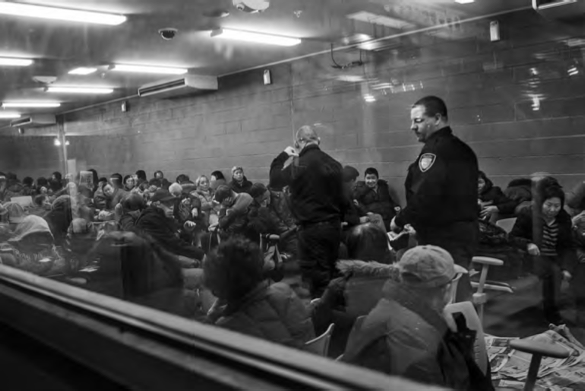
By documenting this phenomenon and the endless journey of bus-kkun, I seek to increase awareness about this complex issue. In putting the reality of the bus-kkun within the photographic frame, I hope to call attention to a problem that has existed for decades but has not received attention from mainstream media outlets.
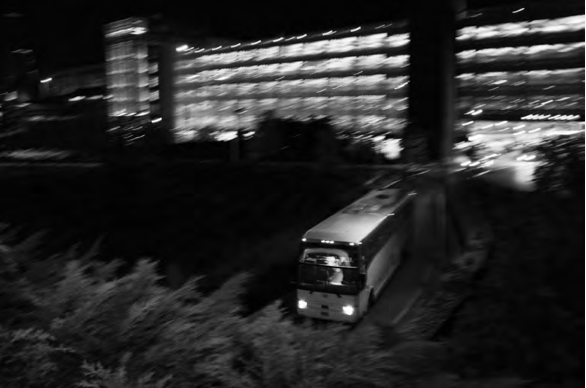
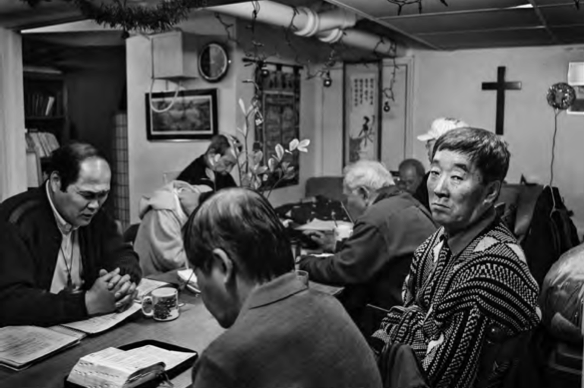
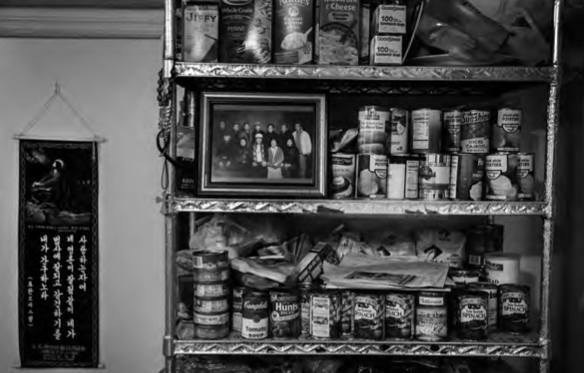


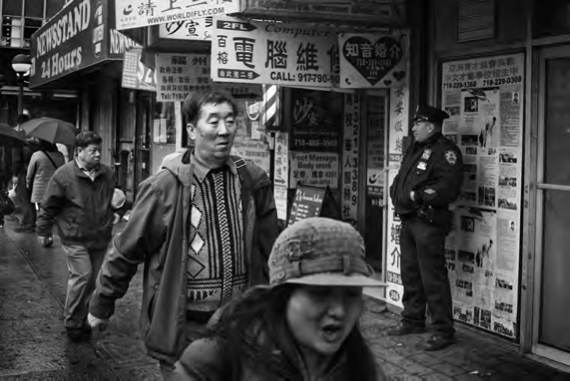


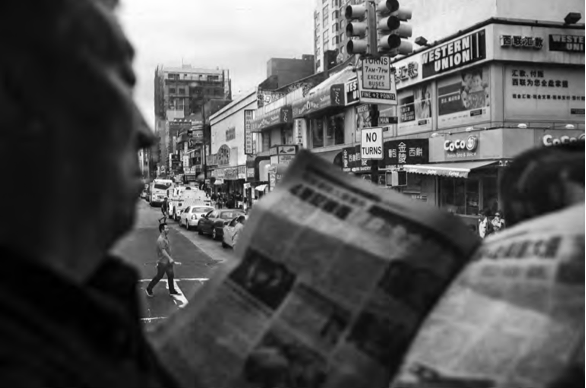
Note
Images from this visual essay have been previously published in the New York Times, the New York Times Lens Blog, socialdocumentary.net, American Photography 30 Online Archive, OpenShow.org, and the Poker Guru Blog, Fluter.de magazine. All photos are copyright of Yeong-Ung Yang.
Yeong-Ung Yang was born in 1984 in Dae-gu, South Korea. He graduated from the Photojournalism/Documentary Photography Program at the International Center of Photography in New York City, where he received the Rita K. Hilman Award. Yang began his career in journalism in 2006 when he was hired to work as a videographer for the Public Affairs Office of the Korean Army. During this seven-month period, he was stationed in Zaytun Division, located in Arbil, Iraq. Between 2010 and 2012, he worked as a writer and photographer for the Korea Daily in New York, and his work continues to focus on documenting the everyday lives of Korean Americans based in New York City. In 2013, Yang completed a Magnum Foundation Emergency Fund Fellowship that funded his long-term documentary project on the bus-kkun community. This under-reported issue of the bus-kkun has been featured as a photo essay, “The Casino as Life- line” (August 2013) in the New York Times. The multimedia piece of this project received the Best of Show award in the 2014 NPPA Northern Short Course Contest and Honorable Mention in the 4th Lumix Festival for Young Photojournalists. Yang currently works as a freelance photo/video journalist and is a contributing reporter and translator for the New York Times.


